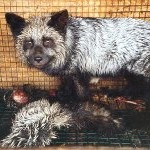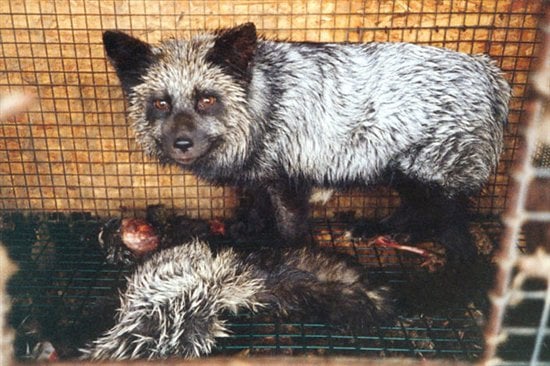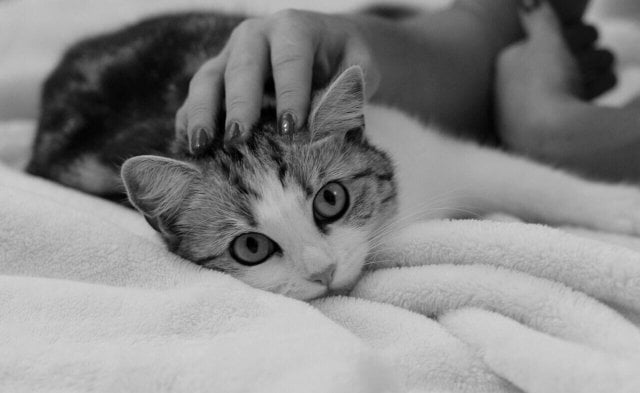
Mahiki’s sister club, Mahiki Dubai, quickly followed suit, and other hotspots around the world should do the same. Real fur is neither kind nor sustainable, and the move away from cruelly produced animal skins is one trend that we should all embrace.
People go to nightclubs to have fun, but fur is a buzzkill. That’s why several clubs in New York City enacted their own fur bans in the early 2000s. You have only to see the video of a skinned but still-living raccoon dog tossed onto a heap of carcasses like trash, with just enough strength left to lift her bloodied head and stare into the camera, to understand that killing an animal for the sake of vanity is wrong.
Today, kind people wouldn’t dream of wearing a coat or other garment made from a mink or a fox whose whole life was spent pacing the wire floor of a tiny cage. That’s what “life” is like for animals on fur farms, where most fur comes from. Many of these animals slowly lose their minds from the stress and deprivation.
In China, the world’s largest exporter of fur, workers bludgeon raccoon dogs, cut off rabbits’ heads and rip the fur off animals’ bodies as they writhe in pain. Foxes are packed individually into cramped, filthy cages not much bigger than their own bodies. Some foxes go insane from the isolation and frantically spin in circles inside the cages before they are finally clubbed or electrocuted.
Undercover investigations have revealed equally appalling conditions on fur farms in Finland and Sweden, two countries that participate in the fur industry’s “Origin Assured” program, which purportedly guarantees that the animals were treated “humanely” before they were senselessly slaughtered. You can decide for yourself if you think that’s true: In Sweden, investigators found farmed minks suffering from severe psychological distress. Many of the animals had resorted to self-mutilation and even cannibalism. Animals on farms in Finland suffered from untreated, oozing wounds and broken and malformed limbs. Dead animals infested with maggots were left to rot among the living.
Producing fur also takes a tremendous toll on the environment. A study of mink farms conducted by an independent research group in Europe concluded that mink fur production causes more harm to the environment than any other material analyzed, including polyester (a petroleum-based fabric). Like other animal skins, fur coats have to be treated with a variety of toxic chemicals so that they don’t rot in the buyer’s closet.
There will probably always be some celebrities and designers who promote fur in an effort to provoke controversy. But with so many consumers now seeking eco- and animal-friendly materials, pelt pushers run the risk of seeming not controversial but just plain callous.
Perhaps fashion writer Melanie Rickey, who had been asked about Mahiki’s anti-fur policy, put it best: With so many modern, high-quality faux-fur options available today, “you can get the look without killing an animal, so why wouldn’t you?”





